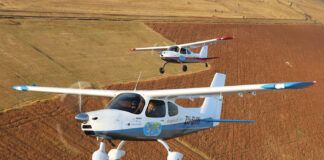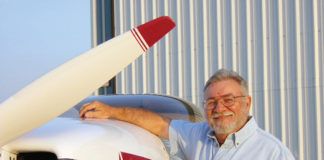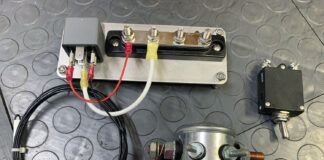Jess Meyers is a calm and capable guy. Developer of the Belted Air Power redrive system for Experimentals using auto engines, specifically GM V-6s, Jess has not only been through the development ringer many times, but he strikes me as cautious enough to avoid reaching conclusions without a lot of study
So when he called me the other day to tell me that we-as in the Experimental community-might have a serious problem with certain types of fuel selectors, I listened. His theory is simple: The brass fuel selector valves that have been a mainstay of certified aircraft-and used in Experimentals-are subject to a peculiar kind of failure that is very difficult to detect and can lead to engine symptoms equally hard to pin down.
Specifically, says Jess, the O-ring at the top of the selector-valve shaft can become brittle and leak-no surprise there, as many rubber components fail like this over time. Because in most low-wing installations there’s little to no fuel pressure at this joint, it wont leak; you could look at it all day long and never suspect a thing. But what it will do is allow air into the system, particularly for fuel-injected installations with high-volume fuel pumps downstream of the valve.
Jess likens the effect to sucking soda through a straw with a hole in the bendy part. Youll get some Barqs, sure, but you’ll also get plenty of air bubbles. Problem is that carburetors and fuel-injector servos don’t like froth in the fuel line, and the result is an engine that hiccups during the period of maximum fuel demand-which also happens to be the most critical part of the flight. The takeoff. Or, a very bad time for the engine to misbehave. Jess is convinced that a number of fuel-starvation accidents and a few that have been tagged as “pilot error” are actually air intrusion issues.
Jess has a simple test. Place a dab of 50-weight oil on the selector shaft where it exits the valve. If, after a few flights, that oil has been consumed by the shaft, its likely the seal is leaking, and its time to replace it. Beyond that, its worth examining the fuel selector closely if you’re having any kind of high-flow anomalies-the occasional burp on takeoff or the rumble in the climb. Historically, fuel system maladies have been one of the areas Experimental aircraft seemed to specialize in, though several production airplanes Ive flown have had less than stellar fuel-system designs. (Cessna 210s come to mind.)
I suppose the real bottom line is that we need to take our fuel systems very seriously. Tolerate no leaks, drips or splats-that much is as obvious as the fuel stains on the flap of an old Skylane I used to rent-but also don’t give up on unexplained symptoms. Work methodically toward a solution until everything works perfectly, all the time.
Weblog Flog
Since late February, we’ve been populating the KITPLANES Newsblog with, well, news and blog-like stuff. If you haven’t been there ever (or in a while), click on over to www.kitplanes.com/blog. Well be updating it regularly during the year, and daily during the major airshows. One aspect of the blog we like is the possibility of quick and casual comments by readers. At the end of every posting, there is a link to read existing comments and add new ones. I encourage you to tell us what you think, and offer suggestions on how we can make this exciting form of communication more useful and relevant to you.
MARC COOK has been in aviation journalism for 20 years and in magazine work for more than 25. He is a 4000-hour instrument-rated, multi-engine pilot with experience in nearly 150 types. Hes completed two kit aircraft, an Aero Designs Pulsar XP and a Glastar Sportsman 2+2.




